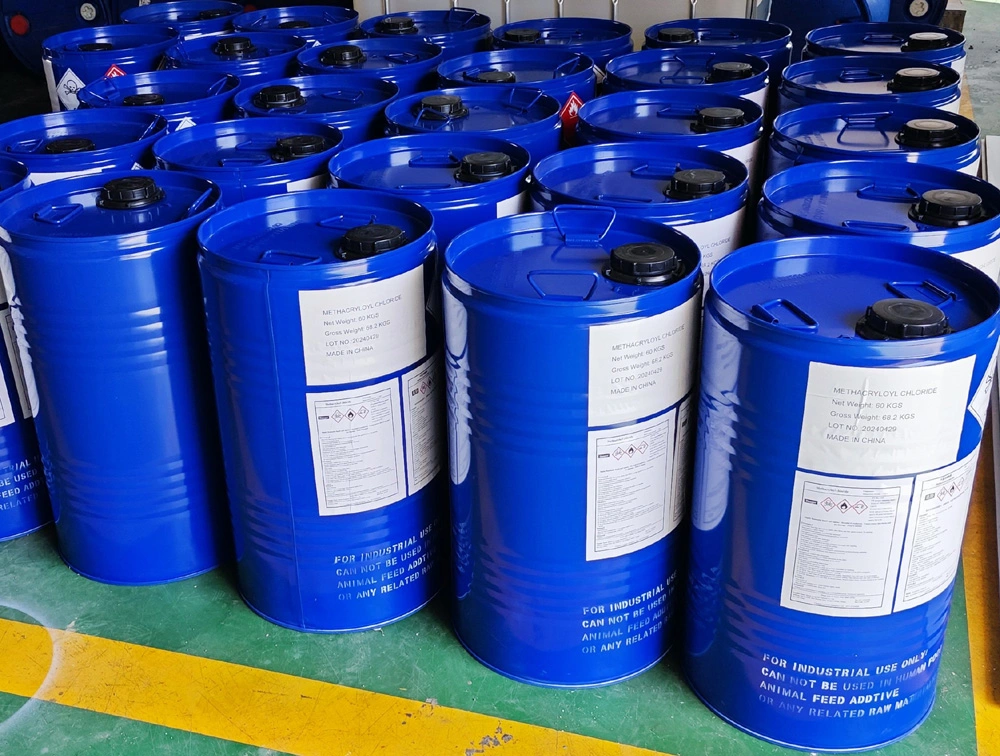Introduction:
In the realm of organic chemistry, methacryloyl chloride Cas No.:920-46-7 stands out as a versatile compound with numerous applications across various industries. Let’s delve into the fascinating world of this compound, exploring its properties, diverse applications, and considerations for safe handling.
Understanding Methacryloyl Chloride Cas No.:920-46-7:
Methacryloyl chloride Cas No.:920-46-7, with the chemical formula CH2=C(CH3)COCl, belongs to the family of acyl chlorides. It is derived from methacrylic acid and is characterized by a reactive acyl chloride functional group. This compound is a colorless liquid with a pungent odor.
Properties and Reactivity of Methacryloyl Chloride Cas No.:920-46-7:
One of the key features of methacryloyl chloride is its reactivity. It is highly reactive towards nucleophiles, such as amines and alcohols, undergoing rapid reactions to form corresponding amides and esters, respectively. This reactivity makes it valuable in organic synthesis as a building block for various compounds.
Applications Across Industries:
- Polymer Chemistry: Methacryloyl chloride is a vital monomer in the production of polymethacrylate resins, including polymethyl methacrylate (PMMA). These polymers find extensive applications in the manufacturing of optical materials, medical devices, and automotive components due to their transparency, durability, and weather resistance.
- Surface Modification: The reactivity of methacryloyl chloride enables its use in surface modification processes. We can employ it to functionalize surfaces, such as polymers or nanoparticles, to introduce desired properties like hydrophobicity or biocompatibility.
- Biomedical Applications: Methacryloyl chloride plays a crucial role in the synthesis of methacrylate-based biomaterials used in tissue engineering, drug delivery systems, and biomedical coatings. Its ability to form biocompatible polymers makes it valuable in the development of medical devices and implants.
Safety Considerations:
While methacryloyl chloride offers significant benefits, it is essential to handle it with care due to its corrosive and reactive nature. When we handling this compound, we should take proper personal protective equipment, including gloves, goggles, and lab coats. Additionally, in order to prevent exposure to vapors, we should conduct it in a well-ventilated area .
Conclusion:
In conclusion, methacryloyl chloride emerges as a multifaceted compound with wide-ranging applications in polymer chemistry, surface modification, and biomedical fields. Its reactivity and versatility make it a valuable tool for organic chemists and engineers alike. However, safety should always be a top priority when working with this compound to ensure its benefits are realized without risk.






